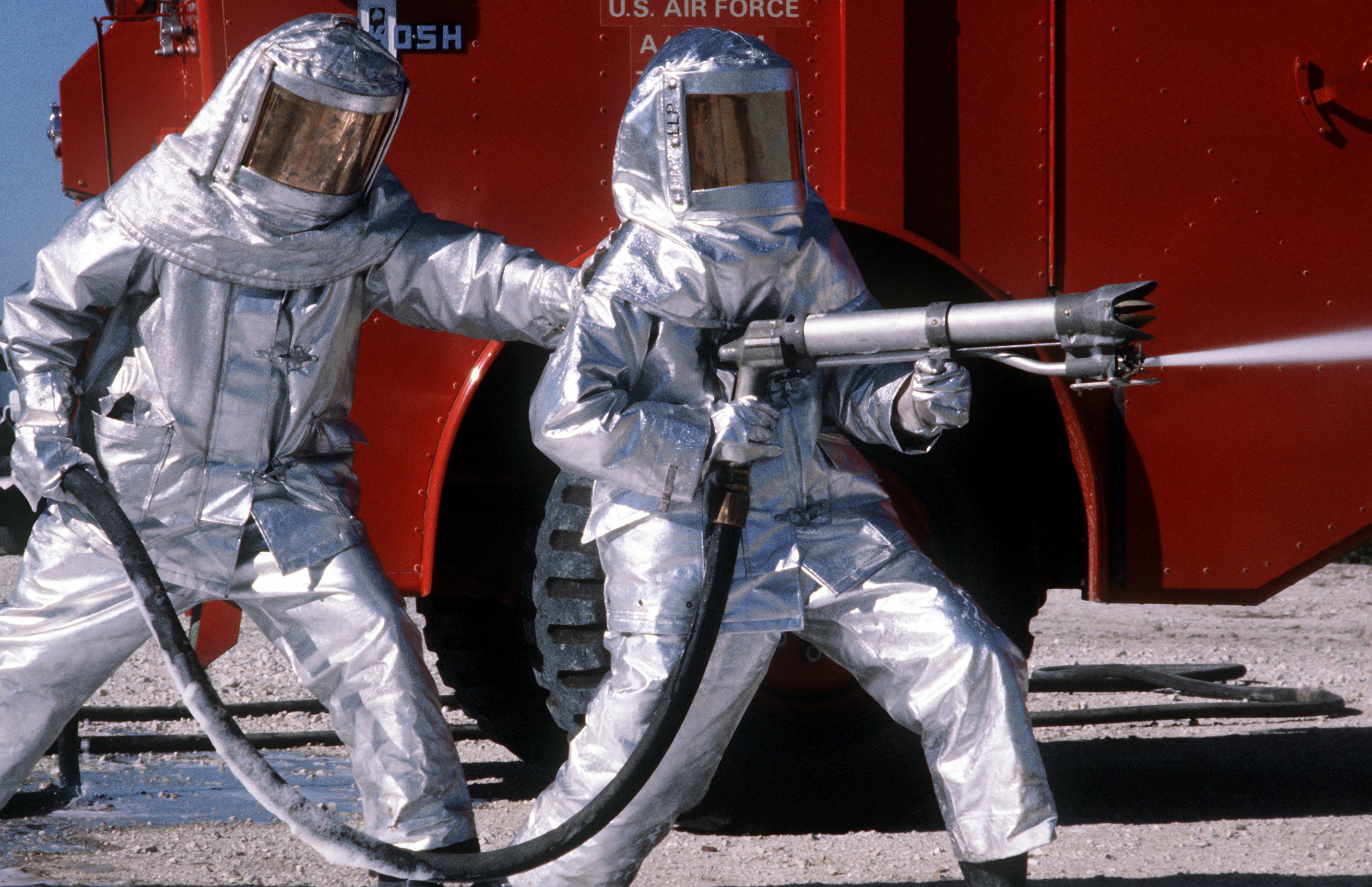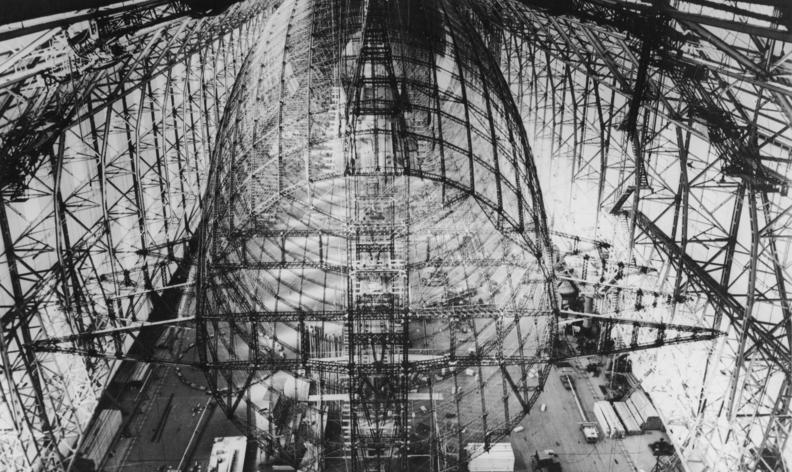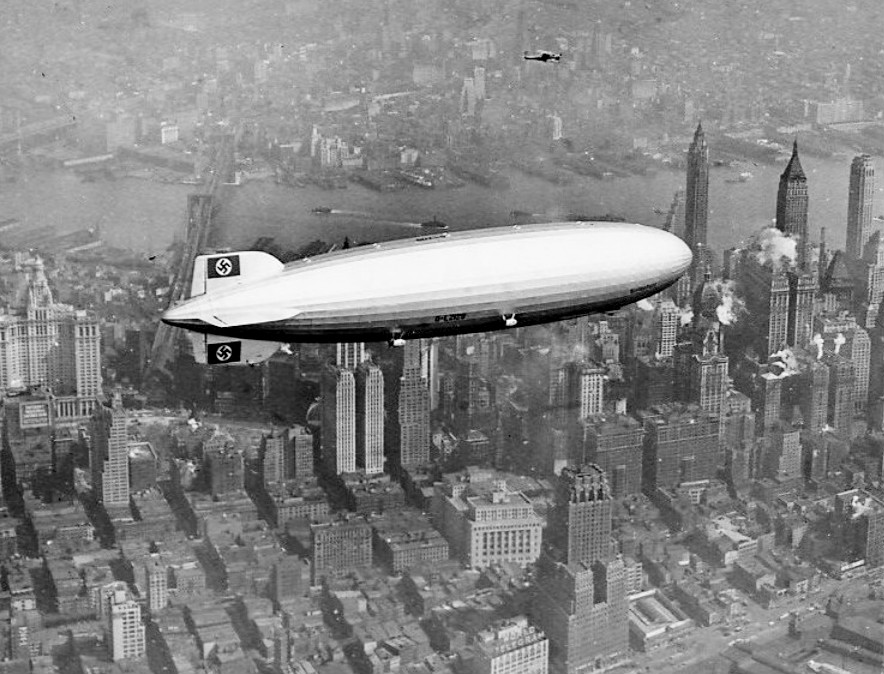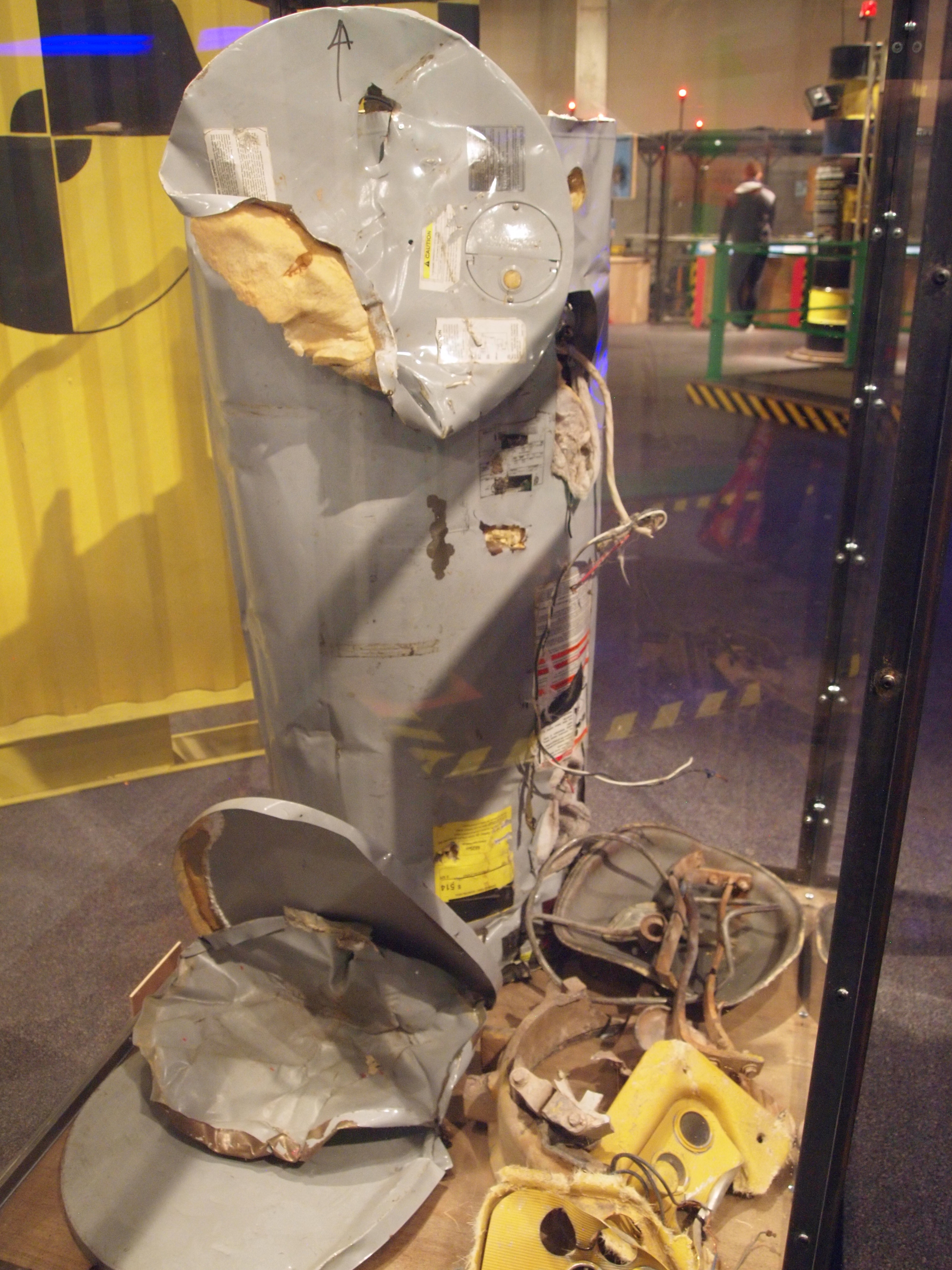|
Aluminized Cloth
Aluminized cloth is a material designed to reflect thermal radiation. Applications include fire proximity suits, emergency space blankets, protection in molten metal handling, and insulation for building and containers. Aluminium powder was added to aircraft dope which was then used to give a shiny finish to fabric-covered aircraft, so protecting them from sunlight. The Hindenburg airship was treated in this way and it has been suggested that the aluminium powder made the skin more combustible and so caused or contributed to the Hindenburg disaster. This theory is controversial and experiments have been conducted to test the hypothesis. See also * Reflectivity * Thermal insulation Thermal insulation is the reduction of heat transfer (i.e., the transfer of thermal energy between objects of differing temperature) between objects in thermal contact or in range of radiative influence. Thermal insulation can be achieved with s ... * MythBusters (2007 season)#Hindenburg Mystery ... [...More Info...] [...Related Items...] OR: [Wikipedia] [Google] [Baidu] |
Fire Proximity Suit
A fire proximity suit (also, silvers, silver bunker suit, or asbestos suit) is a suit designed to protect a firefighter or volcanologist from extremely high temperatures. They were first designed and used in the 1930s. Originally made of asbestos fabric, current models use vacuum-deposited aluminized materials. History Fire proximity suits first appeared during the 1930s, and were originally made of asbestos fabric. Today they are manufactured from vacuum-deposited aluminized materials that reflect the high radiant loads produced by the fire. An early manufacturer of the aluminized suits was the Bristol Uniforms company under of Patrick Seager Hill. Types There are three basic types of these aluminized suits: * Approach suit—used for work in the general area of high temperatures such as steel mills and smelting facilities. These usually provide ambient heat protection up to ≈. * Proximity suit—used for aircraft rescue and fire fighting (AR-FF) and, in more heavily ... [...More Info...] [...Related Items...] OR: [Wikipedia] [Google] [Baidu] |
Space Blanket
A space blanket (also known as a Mylar blanket, emergency blanket, first aid blanket, safety blanket, thermal blanket, weather blanket, heat sheet, foil blanket, or shock blanket) is an especially low-weight, low-bulk blanket made of heat-reflective, thin, plastic sheeting. They are used on the exterior surfaces of spacecraft for thermal control, as well as by people. Their design reduces the heat loss in a person's body, which would otherwise occur due to thermal radiation, water evaporation, or convection. Their low weight and compact size before unfurling make them ideal when space or weight are at a premium. They may be included in first aid kits and with camping equipment. Lost campers and hikers have an additional possible benefit: the shiny surface flashes in the sun, allowing its use as an improvised distress beacon for searchers and as a method of signalling over long distances to other people. Manufacturing First developed by NASAs Marshall Space Flight Center in 1 ... [...More Info...] [...Related Items...] OR: [Wikipedia] [Google] [Baidu] |
Harper & Row
Harper is an American publishing house, the flagship imprint of global publisher HarperCollins based in New York City. History J. & J. Harper (1817–1833) James Harper and his brother John, printers by training, started their book publishing business J. & J. Harper in New York City in 1817. Their two brothers, Joseph Wesley and Fletcher, joined them in the mid-1820s. Harper & Brothers (1833–1962) The company changed its name to "Harper & Brothers" in 1833. The headquarters of the publishing house were located at 331 Pearl Street, facing Franklin Square in Lower Manhattan (about where the Manhattan approach to the Brooklyn Bridge lies today). Harper & Brothers began publishing ''Harper's New Monthly Magazine'' in New York City in 1850. The brothers also published ''Harper's Weekly'' (starting in New York City in June 1857), '' Harper's Bazar'' (starting in New York City in November 2, 1867), and ''Harper's Young People'' (starting in New York City in 1879). George B. M ... [...More Info...] [...Related Items...] OR: [Wikipedia] [Google] [Baidu] |
Aluminium Powder
Aluminium powder is powdered aluminium. This was originally produced by mechanical means using a stamp mill to create flakes. Subsequently, a process of spraying molten aluminium to create a powder of droplets was developed by E. J. Hall in the 1920s. The resulting powder might then be processed further in a ball mill to flatten it into flakes for use as a coating or pigment. Characteristics The melting point of aluminium powder is 660 °C. Usage * autoclave aerated concrete * cosmetic colourant * fingerprint powder * metallic paint * pyrotechnics (including the M-80 firecracker) * refractory * rocket and missile fuel such as the solid rocket boosters of the Space Shuttle * thermite Depending on the usage, the powder is either coated or uncoated. Safety Aluminium is insoluble. If the powder or dust is breathed in then little of it will be absorbed but it may interfere with the clearance mechanism of the lung. High levels of exposure over many years may result in alu ... [...More Info...] [...Related Items...] OR: [Wikipedia] [Google] [Baidu] |
Aircraft Dope
Aircraft dope is a plasticised lacquer that is applied to fabric-covered aircraft. It tightens and stiffens fabric stretched over airframes, which renders them airtight and weatherproof, increasing their durability and lifespan.Crane, Dale: ''Dictionary of Aeronautical Terms, third edition'', page 170. Aviation Supplies & Academics, 1997. The technique has been commonly applied to both full-size and flying models of aircraft. Attributes Doping techniques have been employed in aircraft construction since the dawn of heavier-than-air flight; the fabric of the ground-breaking Wright Flyer had benefitted from doping, as did many of the aircraft that soon followed. Without the application of dope, fabric coverings lacked durability while being highly flammable, both factors rendering them far less viable. By the 1910s, a wide variety of doping agents had entered widespread use while entirely original formulas were being regularly introduced in the industry. Typical doping agents in ... [...More Info...] [...Related Items...] OR: [Wikipedia] [Google] [Baidu] |
Aircraft Fabric Covering
Aircraft fabric covering is a term used for both the material used and the process of covering aircraft open structures. It is also used for reinforcing closed plywood structures. The de Havilland Mosquito is an example of this technique, as are the pioneering all-wood monocoque fuselages of certain World War I German aircraft like the LFG Roland C.II in its wrapped ''Wickelrumpf'' plywood strip and fabric covering. Early aircraft used organic materials such as cotton and cellulose nitrate dope; modern fabric-covered designs usually use synthetic materials such as Dacron and butyrate dope for adhesive. Modern methods are often used in the restoration of older types that were originally covered using traditional methods. Purpose/requirements The purposes of the fabric covering of an aircraft are: * To provide a light airproof skin for lifting and control surfaces. * To provide structural strength to otherwise weak structures. * To cover other non-lifting parts of an airc ... [...More Info...] [...Related Items...] OR: [Wikipedia] [Google] [Baidu] |
LZ 129 Hindenburg
LZ 129 ''Hindenburg'' (; Registration: D-LZ 129) was a German commercial passenger-carrying rigid airship, the lead ship of the ''Hindenburg'' class, the longest class of flying machine and the largest airship by envelope volume. It was designed and built by the Zeppelin Company ( ''Luftschiffbau Zeppelin GmbH'') on the shores of Lake Constance in Friedrichshafen, Germany, and was operated by the German Zeppelin Airline Company (''Deutsche Zeppelin-Reederei''). It was named after Field Marshal Paul von Hindenburg, who was President of Germany from 1925 until his death in 1934. The airship flew from March 1936 until it was destroyed by fire 14 months later on May 6, 1937, while attempting to land at Lakehurst Naval Air Station in Manchester Township, New Jersey, at the end of the first North American transatlantic journey of its second season of service. This was the last of the great airship disasters; it was preceded by the crashes of the British R38, the US airship ''Roma ... [...More Info...] [...Related Items...] OR: [Wikipedia] [Google] [Baidu] |
Hindenburg Disaster
The ''Hindenburg'' disaster was an airship accident that occurred on May 6, 1937, in Manchester Township, New Jersey, United States. The German passenger airship LZ 129 ''Hindenburg'' caught fire and was destroyed during its attempt to dock with its mooring mast at Naval Air Station Lakehurst. The accident caused 35 fatalities (13 passengers and 22 crewmen) from the 97 people on board (36 passengers and 61 crewmen), and an additional fatality on the ground. The disaster was the subject of newsreel coverage, photographs and Herbert Morrison's recorded radio eyewitness reports from the landing field, which were broadcast the next day. A variety of theories have been put forward for both the cause of ignition and the initial fuel for the ensuing fire. The publicity shattered public confidence in the giant, passenger-carrying rigid airship and marked the abrupt end of the airship era. Flight Background The ''Hindenburg'' made 10 trips to the United States in 1936. ... [...More Info...] [...Related Items...] OR: [Wikipedia] [Google] [Baidu] |
Reflectivity
The reflectance of the surface of a material is its effectiveness in reflecting radiant energy. It is the fraction of incident electromagnetic power that is reflected at the boundary. Reflectance is a component of the response of the electronic structure of the material to the electromagnetic field of light, and is in general a function of the frequency, or wavelength, of the light, its polarization, and the angle of incidence. The dependence of reflectance on the wavelength is called a ''reflectance spectrum'' or ''spectral reflectance curve''. Mathematical definitions Hemispherical reflectance The ''hemispherical reflectance'' of a surface, denoted , is defined as R = \frac, where is the radiant flux ''reflected'' by that surface and is the radiant flux ''received'' by that surface. Spectral hemispherical reflectance The ''spectral hemispherical reflectance in frequency'' and ''spectral hemispherical reflectance in wavelength'' of a surface, denoted and respectively, are ... [...More Info...] [...Related Items...] OR: [Wikipedia] [Google] [Baidu] |
Thermal Insulation
Thermal insulation is the reduction of heat transfer (i.e., the transfer of thermal energy between objects of differing temperature) between objects in thermal contact or in range of radiative influence. Thermal insulation can be achieved with specially engineered methods or processes, as well as with suitable object shapes and materials. Heat flow is an inevitable consequence of contact between objects of different temperature. Thermal insulation provides a region of insulation in which thermal conduction is reduced, creating a thermal break or thermal barrier, or thermal radiation is reflected rather than absorbed by the lower-temperature body. The insulating capability of a material is measured as the inverse of thermal conductivity (k). Low thermal conductivity is equivalent to high insulating capability ( resistance value). In thermal engineering, other important properties of insulating materials are product density (ρ) and specific heat capacity (c). Definition T ... [...More Info...] [...Related Items...] OR: [Wikipedia] [Google] [Baidu] |
MythBusters (2007 Season)
The cast of the television series ''MythBusters'' performs experiments to verify or debunk urban legends, old wives' tales, and the like. This is a list of the various myths tested on the show, as well as the results of the experiments (the myth is MythBusters#Outcomes of the experiments, Busted, Plausible, or Confirmed). Episode overview Episode 70 – "Hindenberg Mystery" * Original air date: January 10, 2007 Hindenburg Mystery Crocodile Zig Zags Episode 71 – "Pirate Special" * Original air date: January 17, 2007 This was a double-length episode. Cannonball vs. Shrapnel Eye Patch Knife Sail Rum: Stain Remover? Episode 72 – "Underwater Car" * Original air date: January 24, 2007 Underwater Car According to the American Automobile Association, an estimated 11,000 vehicles crashed into bodies of water in one year. The MythBusters tested various methods of escaping a sinking car, in this case a Ford Taurus. Having confirmed the myth, Adam and Jam ... [...More Info...] [...Related Items...] OR: [Wikipedia] [Google] [Baidu] |



.jpg)





